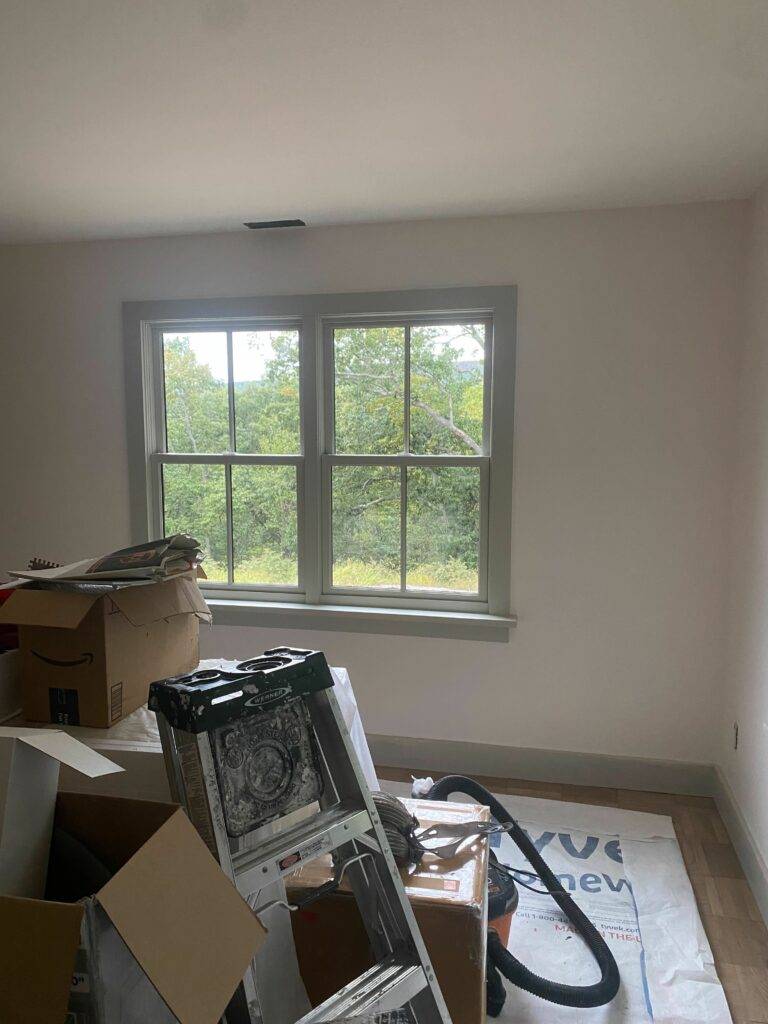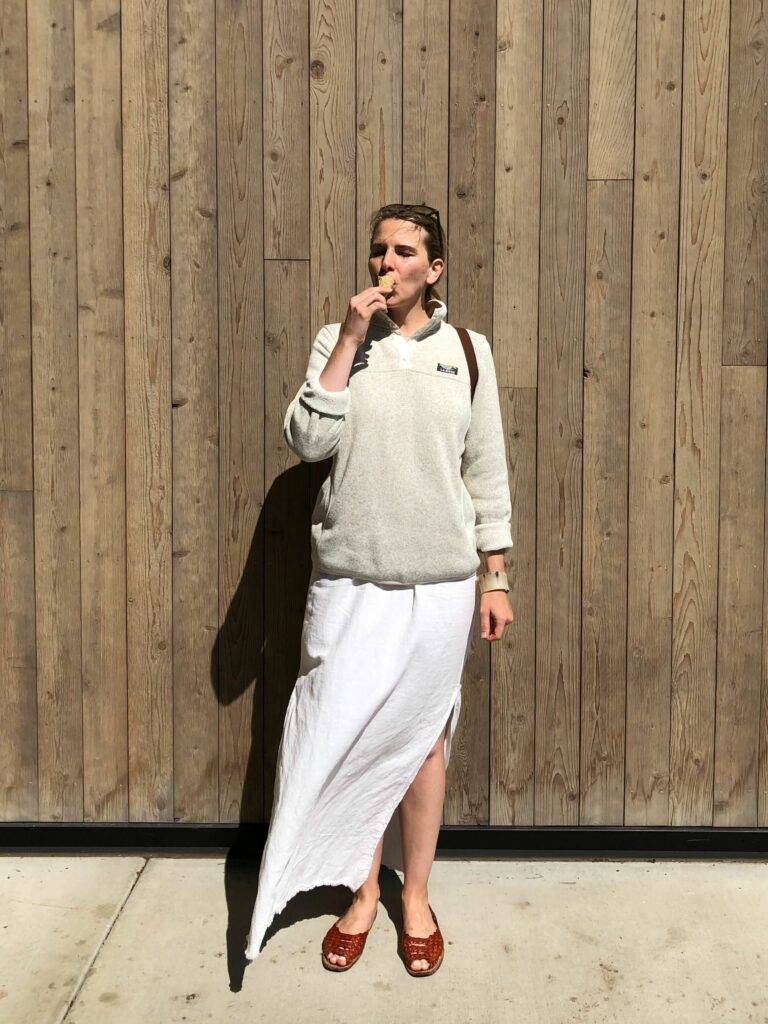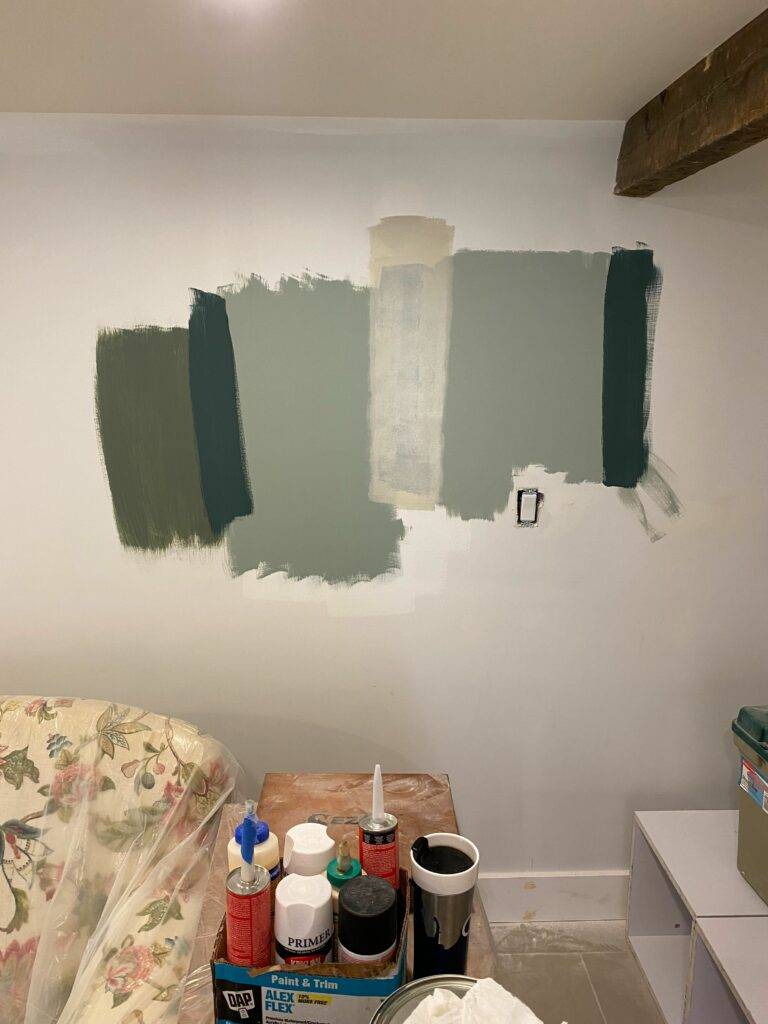Easy, peaceful, and cozy — these words became the guide for decision-making, and they became especially important when it came to interior paint.
Check out the previous chapters of the Cabbage Dispatch (and more) here.
Rest is not a state I know well. I’m a do-er, a DIYer, an improver — and there’s always something to make better. My mindset towards the renovation was to saturate my world with everything Cabbage until it was done. I would tell myself, “once I finish this part of the house, I’ll take a break”. But once I completed one project, there was always another to begin, and taking a break would just prolong the work. It became a vicious cycle of hard work, half-hearted attempts at rest, and powering through to reach the next goal. For a long time, I managed to keep up with this pace.
By the 18th month of the renovation, I was entering the home stretch, exhausted and eager to get to the finish line. I worked 21 days straight prepping the walls for paint, finishing baseboards and trim, and installing nickel-gap paneling throughout much of the basement to elevate the sheetrock walls.
By the 18th month, I had also become very clear on what I wanted The Cabbage to eventually be: easy, peaceful, and cozy. These words became the guide for decision-making, and they became especially important when it came to interior paint.
I am in awe of people who are good with color. The people who can make bold colors and patterns look effortless, and even natural. Color has never been my strong suit. I’d even go as far as to say I’m color-phobic. The sheer volume of possibilities is overwhelming and daunting. A fan deck of 1,000 colors is my nightmare. Saying something is “vanilla” implies it’s uninventive or, dare-I-say, basic, but I love vanilla — especially as a color palette. It’s hard to argue with neutrals: They’re uncomplicated and go with everything.
I had to pick paint for the kitchen and dining room before the rest of the house for a video shoot. I collaborated with the non-toxic, zero VOC brand ECOS Paints and after months of staring at three slightly different white paints, I chose their Creamery White and, per their suggestion, paired it with Met Grey for the trim. I loved this color combo because it was warm, calming, and easy on the eyes.
When it came to painting the rest of The Cabbage months later, I didn’t want to be boring, so I did what I thought was necessary: collected tons of inspo images, watched videos about complementary pairings, and bought more than enough samples. I wanted each room to feel special, but also like it belonged with the rest of the house. I painted my samples onto boards that I could move around the rooms to test with the changing light, a trick I learned from an interior designer. I eventually landed on deep teal in the tv room, yellow and green in the guest room, blush walls and mauve trim in the primary bedroom, and dark blue in the bathroom. Color phobia be gone!
Painting is one of the easier DIYs, but I just didn’t have it in me to paint 12 ceilings, 15 windows, and 40+ walls, so I hired painters (gasp!). They started in the primary bedroom, unfurling canvas tarps to cover the wood floors and opening new brushes for the colorful gallons of paint I had proudly purchased the day before. I buzzed around, showing them which colors went where and how nice they looked against the wallpaper samples I was considering. Then I left them to do the work I couldn’t — err, wouldn’t.
When I came back at the end of the day, I opened the door to my bedroom, anticipating the romantic hug of creamy blush walls and mauve woodwork. I was horrified. I had Band-Aid walls with hot chocolate trim. Unsure of what to do, I asked the painters to work in a different room. They started rolling the dark blue in the bathroom and after one wall I stopped them. It was too dark. We sampled the rest of the colors in their intended rooms — I didn’t like any of them.

I had just spent all this time and money honing in on what I wanted my home to feel like, and it was wrong. I was back at square one. My decision fatigue was at an all-time high, and I had a crew waiting on my direction. After multiple trips back to the paint store, more samples, and fewer decisions, I was visibly upset. One of the painters brought me to the finished dining room. He gestured to the creamy white and warm gray trim, “You love this, right? When you find a color you love, don’t be afraid to use it.”
That was all the permission I needed to paint the entire house Creamery White and never think about it again. When I look back to what I now call Paintgate, I see clearly that I had lost the vision for what I wanted all along — easy, peaceful, cozy. I was so wrapped up in photo-worthy living rooms that I forgot how I wanted to live in my rooms. Maybe in the future I’ll experiment with color. I did end up using the teal paint to transform a white bench. But for now, the gallons of colorful paint are sitting in the attic, and I am enjoying the simplicity that flows through all the rooms of The Cabbage. It feels very me — proudly vanilla.




Making a home feel uniquely yours is equal parts inspiration and introspection. Collect images, make inspo boards, find rooms and homes you’re obsessed with, but don’t stop there. Think about your lifestyle, how you want to feel when you walk into a room, and what colors make you feel that way. Cultivate words that describe your home and hold onto them. They don’t have to be fixed, they just have to be yours.
Shortly after the painters had packed up their canvases and left The Cabbage, I was on the phone with an old friend — he was tending his backyard food forest in Los Angeles and I was staring at a pile of lumber I had been meaning to move for months. I complained to him about my constant state of overwhelm and how seemingly “fun” things, like picking tile and paint, had become burdens that made me feel like a failure. He didn’t skip a beat before saying, “To hike to the top of the mountain, sometimes you need to rest.” I knew, deep in my tired bones, he was absolutely right.







